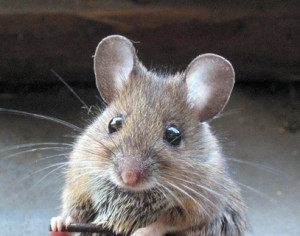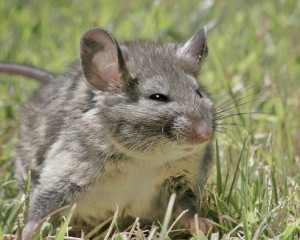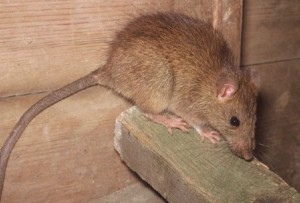Rodent – Mouse Control & Removal, Rat Removal
Rodent – Mouse Control & Removal, Rat Removal
Bugs aren’t the only creatures that can be detrimental to humans – animals can be pests, too. If not controlled properly, an animal pest can have a significant impact on your family’s home, health, and safety. Animals most commonly classified as pests are raccoons, skunks, and rodents. Before we look at the most common types of each of these individually, here’s a breakdown of rodents in general: Rats Rats love large urban environments like the Greater Toronto Area (GTA) because it provides them with an excellent diet and various habitats where they can thrive and survive – which is virtually anywhere.Creatures of habit, rats are keenly aware of their environment and suspicious of new items introduced into their surroundings. As a result, rats are very mindful of rat control measures, including traps and bait.
Rats can carry a number of serious diseases, including salmonella, rat-bite fever, leptospirosis, and tapeworms. Rats can also carry the bubonic plague, being historically considered the cause of the “Black Death” that wiped out 30 – 50% of the European population during the Middle Ages. They can also introduce a wide variety of disease-carrying parasites into the home or business, including fleas, lice, and ticks.
Mice: Wild mice are not as cute and cuddly as they appear. Common throughout the GTA and Ontario, mice are year-round pests that enjoy the warmth of the indoors as the weather gets colder. They also like to nest in safe locations near a steady supply of food, like the space between double walls, between ceilings and floors, and closed in areas such as drawers. Not fans of travel, mice tend to live within an area of three to 10 metres from their nests.
Mice that get in-between walls, floors, and ceilings can be a fire hazard, chewing through electrical insulation. Mice can also contaminate food with their feces and urine, spreading diseases such as salmonella bacteria (food poisoning), leptospirosis, and typhus. They also carry parasites such as fleas, roundworms, and mites.
There are four North American rodents that carry the deadly hantavirus: the deer mouse, cotton rat, rice rat, and white-footed mouse. The deer mouse and the cotton rat usually live in rural areas, but can also be found in cities when conditions are right, such as having easily available food, water, and shelter.1
For more information about how City & Country Pest Control can assist you with bird control,
contact us at 905-455-1102 or info@cityandcountrypestcontrol.com.
Rodents
House Mouse
 One of the most commonly encountered rodents in Toronto, the tiny house mouse is covered in short hair that is light brown or grey-to-black in colour, with a lighter belly. An adult house mouse weighs approximately 12 to 30 grams and can grow up to 20 cm from the nose to the tip of the tail. Droppings are rod-shaped and pointed on both ends.
One of the most commonly encountered rodents in Toronto, the tiny house mouse is covered in short hair that is light brown or grey-to-black in colour, with a lighter belly. An adult house mouse weighs approximately 12 to 30 grams and can grow up to 20 cm from the nose to the tip of the tail. Droppings are rod-shaped and pointed on both ends.
GET A FREE QUOTE TO REMOVE YOUR HOUSE MOUSE PROBLEM
Similar mice include the white-footed mouse; jumping mouse, which has a white belly; and harvest mice, which have grooved upper incisor teeth.
Like most mice, the house mouse is a prolific breeder; a single female can produce up to eight litters per year, with an average of six pups per litter. With a gestation period of just 21 days, the pups are weaned after just three weeks and reach sexual maturity at around 35 days.
Norway Rat
 Known by many names, the Norway rat (aka brown rat, common rat, street rat, sewer rat, and wharf rat) is one of the most common rats. The Norway rat is distinguishable by its greyish-brown fur and pale grey belly. The ears and tail are hairless and it can grow up to 18 inches long, including the tail. Males are larger than females. The Norway rat can grow up to nearly half a metre (50 cm in length), including the tail.
Known by many names, the Norway rat (aka brown rat, common rat, street rat, sewer rat, and wharf rat) is one of the most common rats. The Norway rat is distinguishable by its greyish-brown fur and pale grey belly. The ears and tail are hairless and it can grow up to 18 inches long, including the tail. Males are larger than females. The Norway rat can grow up to nearly half a metre (50 cm in length), including the tail.
GET A FREE QUOTE TO REMOVE YOUR NORWAY RAT PROBLEM
Norway rats live in large groups in burrows and can be found residing virtually anywhere, including ditches, basements, sewers, old buildings, barns, dumps, woods, fields, ponds, and marshes. They are also always found near water and are great swimmers and climbers.
Social animals, Norway rat packs hunt, breed, and defend the burrow together. Female rats can have seven litters a year with an average litter of two to 14 young. Norway rats are full-grown in about four weeks, but only live two or three years.
Roof Rat
 The roof rat, or black rat, is similar in appearance to the Norway rat. It is blackish or brownish, with a total length near 40 cm. It has a long, naked and scaly tail, which is usually longer than the head and body (around 19 cm).
The roof rat, or black rat, is similar in appearance to the Norway rat. It is blackish or brownish, with a total length near 40 cm. It has a long, naked and scaly tail, which is usually longer than the head and body (around 19 cm).
GET A FREE QUOTE TO REMOVE YOUR ROOF RAT PROBLEMS
The roof rat is an omnivore, but has a fondness for grains, fruits, nuts, and vegetables. Roof rats spend much of their time in trees or thick vegetation off the ground, but can also be found hiding in woodpiles, debris, and garbage piles. Because roof rats are nocturnal, most people never encounter them. Equally at home in residential and commercial properties, roof rats usually choose to nest in the uppermost areas of a house, attics being the most ideal.
Roof rats breed throughout the year, with two peaks of production: in February and March, and again in May and June. They are least active during the hot period of summer (July and August). The roof rat has a gestation period of approximately 21 days, and each litter produces seven pups on average.


